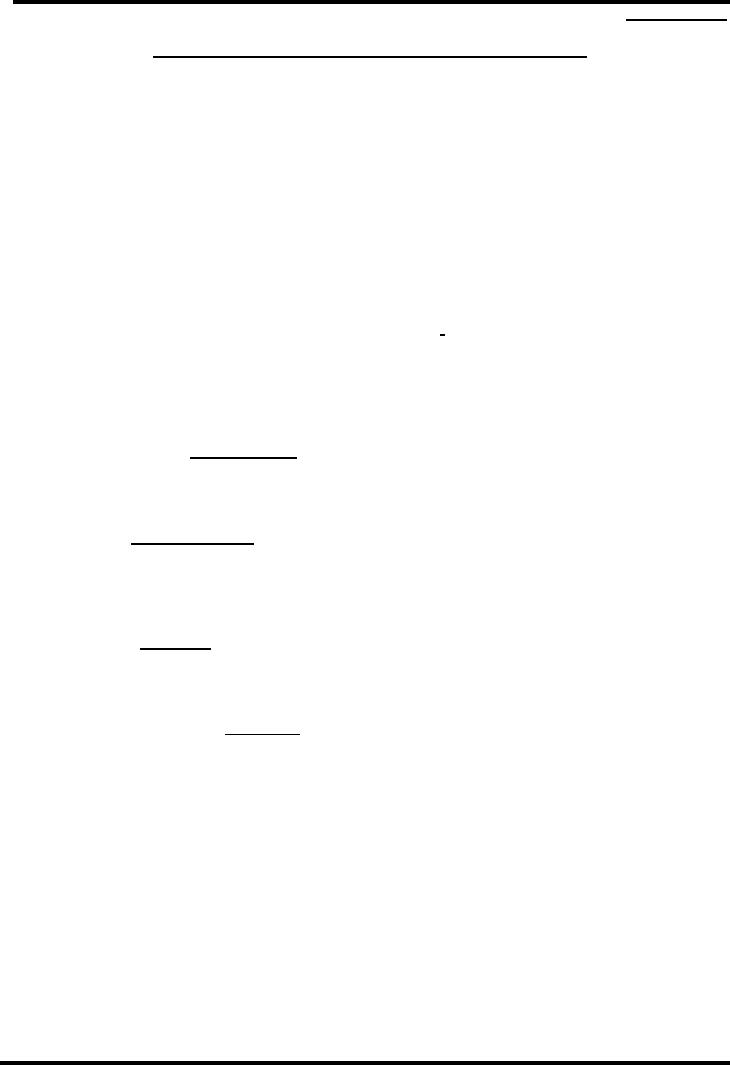 |
RESEARCH WRITING AND DOCUMNETING SOURCES:Handling Long Quotations |
| << THE WRITING STYLES: DESCRIPTIVE AND PERSUASIVE WRITINGS, Observation |
| Summary and Précis Writing:CHARACTERISTICS OF GOOD SUMMARY >> |

Journalistic
Writing MCM310
VU
LECTURE
27
RESEARCH
WRITING AND DOCUMNETING
SOURCES
Research
writing steps:
1.
Select
a
topic.
2.
Frame
a
central research question and
set of sub-questions.
3.
Survey
the
topic.
4.
Locate
materials.
5.
Re-evaluate
your
topic and research
strategy.
6.
Evaluate
your
sources.
7.
Work
with
your sources.
8.
Develop
your
thesis and supporting
argument.
9.
Use
sources fairly
and accurately by integrating
and citing your
sources.
10.
Revise
11.
Edit
and Proofread
Why
Use Global Format (APA, MLA
etc.)?
�
Allows
readers to cross-reference your sources
easily:
This
cross-referencing system allows
readers to locate the publication
information of source material.
This
is
of great value for
researchers who may want to
locate your sources for
their own research
projects.
�
Provides
consistent format within a
discipline:
Using
standard APA or MLA properly will
allow you to communicate
more effectively with
other
researchers
who also use these
formats. When a style is
used consistently, others
can easily find
where
you've
listed your resources.
�
Gives
you credibility as a writer:
The
proper use of global format
shows the credibility of writers;
such writers show accountability to
their
source
material.
�
Protects
yourself from
plagiarism
Plagiarism
is a serious offense not
only in the university system but
also in the professional and
intellectual
circles,
and may result in
punishments.
APA
Style: Two Main
Concerns
�
Reference
Page
�
Parenthetical
Citations
Reference
Page
Most
citations should contain the following basic
information:
�
Author's
name
�
Title
of work
�
Publication
information
100

Journalistic
Writing MCM310
VU
Example:
O'Connor.
(1990). Express
Yourself in Written
English.
Illinois: NTS
References:
Some Examples
Book
Shay,
J. (1994). Achilles
in Vietnam: Combat trauma
and the undoing of
character. New
York: Touchstone.
Article
in
a
Magazine
Klein,
J. (1998, October 5). Dizzy
days The
New Yorker pages 40-45
Web
page
Poland,
D. (1998, October 26). The
hot button Roughcut
Retrieved
October
28,
1998
from
http://www.roughcut.com
A
newspaper
article
Tommasini,
A. (1998, October 27). Master
teachers whose artistry glows in
private New
York Times page
B2
A
source
with
no
known
author
Cigarette
sales fall 30% as California tax
rises. (1999, September 14).
New
York Times page A17
When
Should You Use Parenthetical
Citations?
�
When
quoting
any
words that are not
your own
Quoting
means to repeat another source
word for word, using
quotation marks
�
When
summarizing
facts
and ideas from a
source
Summarizing
means to take ideas from a
large passage of another source
and condense them,
using
your own words
�
When
paraphrasing
a
source
Paraphrasing
means to use the ideas from
another source but change the
phrasing into your
own
words
Keys
to Parenthetical Citations
Most
citations should contain the following basic
information:
�
Author's
name
�
Publication
�
Page
Example:
"Seek
first to understand, then to be
understood." (Covey, 1992,
p.45)
Handling
Quotes in Your
Text
�
Author's
last name, publication year,
and page number(s) of quote
must appear in the
text
Caruth
(1996) states that a
traumatic response frequently
entails a "delayed, uncontrolled
repetitive
appearance
of hallucinations and other intrusive phenomena"
(p.11)
A
traumatic response frequently
entails a "delayed, uncontrolled
repetitive appearance of
hallucinations
and other intrusive phenomena" (Caruth,
1996, p.11).
101

Journalistic
Writing MCM310
VU
Handling
Parenthetical Citations
Sometimes
additional information is necessary . .
.
1.
More than one author
with the same last
name
(H.
James, 1878); (W. James,
1880)
2.
Two or more works in the
same parentheses
(Caruth,
1996; Fussell, 1975;
Showalter, 1997)
3.
Work with six or more
authors
(Smith
et al, 1998)
4.
Specific part of a
source
(Jones,
1995, chap. 2)
5.
If the source has no known
author, then use an abbreviated version
of the title:
Full
Title: "California Cigarette
Tax Deters Smokers"
Citation:
("California," 1999)
6.
A reference to a personal
communication:
Source:
email message from C.
Everett Koop
Citation:
(C. E. Koop, personal communication,
May 16, 1998)
7.
A
general
reference
to
a
web
site
Source:
Bartleby Resources
Citation:
(http://www.bartleby.com)
Recently,
the history of warfare has
been significantly revised by Higonnet et
al (1987), Marcus (1989),
and
Raitt
and Tate (1997) to include
women's personal and cultural
responses to battle and its
resultant traumatic
effects.
Feminist researchers now concur
that "It is no longer true to claim that
women's responses to the
war
have
been ignored" (Raitt & Tate, p.
2). Though these studies
focus solely on women's
experiences, they err by
collectively
perpetuating the masculine-centered impressions
originating in Fussell (1975)
and Bergonzi (1996).
However,
Tylee (1990) further
criticizes Fussell, arguing
that his study "treated
memory and culture as if they
belonged
to a sphere beyond the existence of
individuals or the control of
institutions" (p. 6).
CROSS-REFERENCING:
USING MLA FORMAT
MLA
Style: Two Parts
�
Works
Cited Page
�
Parenthetical
Citations
Works
Cited
Most
citations should contain the following basic
information:
�
Author's
name
�
Title
of work
�
Publication
information
102

Journalistic
Writing MCM310
VU
Works
Cited: Some Examples
Book
Byatt,
A. S. Babel
Tower. New
York: Random House,
1996.
Article
in a Magazine
Klein,
Joe. "Dizzy Days" The
New Yorker 5 Oct.
1998: 40-45.
Web
page
Poland,
Dave. "The Hot Button"
Roughcut
26 Oct.
1998. Turner Network
Television 28 Oct. 1998
<www.roughcut.com>.
A
newspaper article
Tommasini,
Anthony. "Master Teachers
Whose Artistry Glows in
Private" New York
Times 27 Oct.
1998: B2.
A
source with no known
author
"Cigarette
Sales Fall 30% as California
Tax Rises." New
York Times 14
Sept. 1999: A17.
A
TV interview
McGwire,
Mark. Interview with Matt
Lauer, the Today
Show NBC
WTHR, Indianapolis 22 Oct.
1998
A
personal interview
Mellencamp,
John. Personal interview 27 Oct.
1998
Keys
to Parenthetical Citations
Most
citations should contain the following basic
information:
�
Author's
name
�
Page
Example:
"Seek
first to understand, then to be
understood" (Covey, p.45).
Romantic
poetry is characterized by the "spontaneous
overflow of powerful feelings"
(Wordsworth 263).
Wordsworth
stated that Romantic poetry
was marked by a "spontaneous
overflow of powerful
feelings"
(263).
Handling
Parenthetical Citations: Sometimes
more information is necessary
More
than one author with the
same last name
(W.
Wordsworth 23); (D. Wordsworth
224)
More
than one work by the same
author
(Joyce,
Portrait 121); (Joyce, Ulysses 556)
Different
volumes of a multivolume
work
(1:
336)
Citing
indirect sources
(Johnson
qtd. in Boswell 2:450)
If
the source has no known
author, then use an abbreviated version
of the title:
Full
Title: "California Cigarette
Tax Deters Smokers"
Citation:
("California" A14)
103

Journalistic
Writing MCM310
VU
If
the source is only one page
in length or is a web page
with no apparent pagination:
Source:
Dave Poland's "Hot Button"
web column
Citation:
(Poland)
Handling
Long Quotations
David
becomes identified and
defined by James Steerforth, a young man
with whom David is
acquainted from
his
days at Salem House. Before
meeting Steerforth, David accepts
Steerforth's name as an
authoritative
power:
There
was an old door in this playground, on
which the boys had a custom
of carving their names. . . .
In
my dread of the end of the vacation and
their coming back, I could not
read a boy's name, without
inquiring
in
what tone and with what
emphasis he would read,
"Take care of him. He
bites." There was one
boy--a
certain
J. Steerforth--who cut his
name very deep and very
often, who I conceived,
would read it in a rather
strong
voice, and afterwards pull
my hair. (Dickens 68)
For
Steerforth, naming becomes an act of
possession, as well as exploitation.
Steerforth names David
for
his fresh look and
innocence, but also uses the
name Daisy to exploit David's romantic
tendencies (Dyson
122).
Source:
http://www.apastyle.org
http://www.mla.org/
Purdue
University Sources
104
Table of Contents:
- INTRODUCTION TO JOURNALISTIC WRITING:Practical, THINGS TO KNOW
- QUALITIES OF GOOD WRITERS
- QUALITIES OF GOOD WRITERS
- QUALITIES OF GOOD WRITING:Achieve appropriate readability:
- QUALITIES OF GOOD WRITING:Be concise, Be creative, Be correct
- THE PROCESS OF WRITING:INVENTION, WHEN YOU START TO WRITE
- THE PROCESS OF WRITING II:ORGANIZING, DRAFTING, REVISING
- ALL ABOUT WORDS:HOW WORDS ARE FORMED?:SUFFIXES
- DICTIONARY-A WRITER’S LANGUAGE TOOL:KINDS OF INFORMATION
- PARTS OF SPEECH:Noun Gender, Noun Plurals, Countable Nouns
- BASIC CLAUSE PATTERNS
- ACTIVE AND PASSSIVE VOICE
- MODIFIERS AND SENTENCE TYPES:COMPOUND SENTENCES
- REPORTED SPEECH:Indirect Questions, Direct commands
- GRAMMATICAL SENTENCE – ISSUES:SUBJECT-VERB AGREEMENT
- GRAMMATICAL SENTENCE – ISSUES II:SENTENCE FRAGMENTS
- EFFECTIVE SENTENCE:PARALLELISM, NEEDED WORDS, SHIFTS
- STYLE: GUIDELINE AND PITFALLS I:COLLOQUIAL VS FORMAL, CIRCUMLOCUTION
- STYLE: GUIDELINE AND PITFALLS II:AMBIGUITY, REDUNDANCY, EUPHEMISM:
- PARAGRAPH WRITING: TYPES AND TECHNIQUES:STRUCTURE
- PARAGRAPH WRITING: TYPES AND TECHNIQUES:Putting on Our Play
- ESSAY WRITING:VARIOUS STRATEGIES FOR ESSAYS, PROMPTS
- SIGNAL WORDS:Non word Emphasis Signals
- EXPOSITORY WRITING:LOGICAL FALLACIES, APPEAL TO EMOTION
- THE WRITING STYLES: REPORT and NARRATIVE WRITING, SHORT REPORTS
- THE WRITING STYLES: DESCRIPTIVE AND PERSUASIVE WRITINGS, Observation
- RESEARCH WRITING AND DOCUMNETING SOURCES:Handling Long Quotations
- Summary and Précis Writing:CHARACTERISTICS OF GOOD SUMMARY
- Punctuation:THE PERIOD, THE COMMA, THE SEMICOLON, THE COLON
- MECHANICS:ABBREVIATIONS, NUMBERS, SPELLING, THE HYPHEN
- READING SKILLS FOR WRITERS:EDUCATED READING, STEPS
- PARTS OF A NEWSPAPER:Box-out, By-line, Caption, Exclusive, Feature
- THE LANGUAGE OF THE NEWSPAPERS II:BROADSHEET NEWSPAPER
- News Writing and Style I:WHAT TO LOOK FOR IN A NEWSPAPER
- NEWS WRITING II:Accuracy, Clarity, Style, Qualities of Effective Leads
- EDITORIAL WRITING:WRITING AN EDITORIAL:STRUCTURING AN EDITORIAL
- WRITING FEATURES:GENERATING FEATURE STORY IDEAS
- WRITING COLUMNS:Column and a news report, Purpose, Audience
- WRITING ARTICLES FOR NEWSPAPERS:The Heading, The Lead
- WRITING ANALYSIS:purpose, scope, method, results, recommendations
- LETTERS TO EDITORS:Four important aspects about letters, Organizing letters
- BROADCAST AND WEB NEWS WRITING:WRITE CONCISELY, BROADCAST STYLE
- WRITING PRESS RELEASE, REVIEWS AND OBITUARIES:Summary of Content:
- THE ART OF INTERVIEWINGS
- FINAL THOUGHTS:Practical, Job-Related, Social, Stimulating, Therapeutic